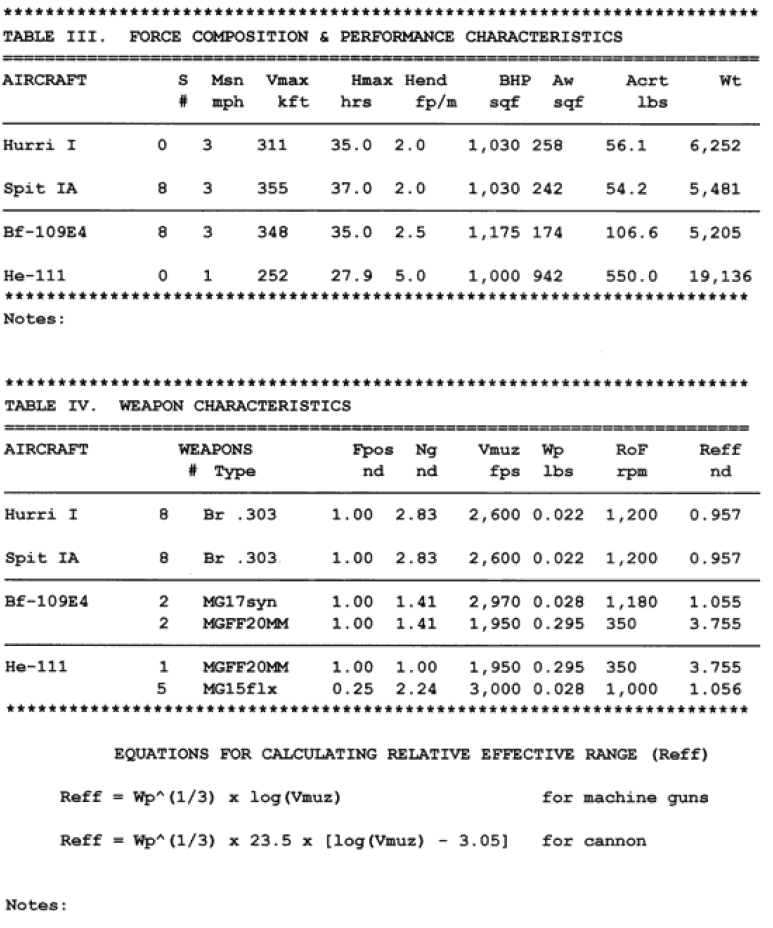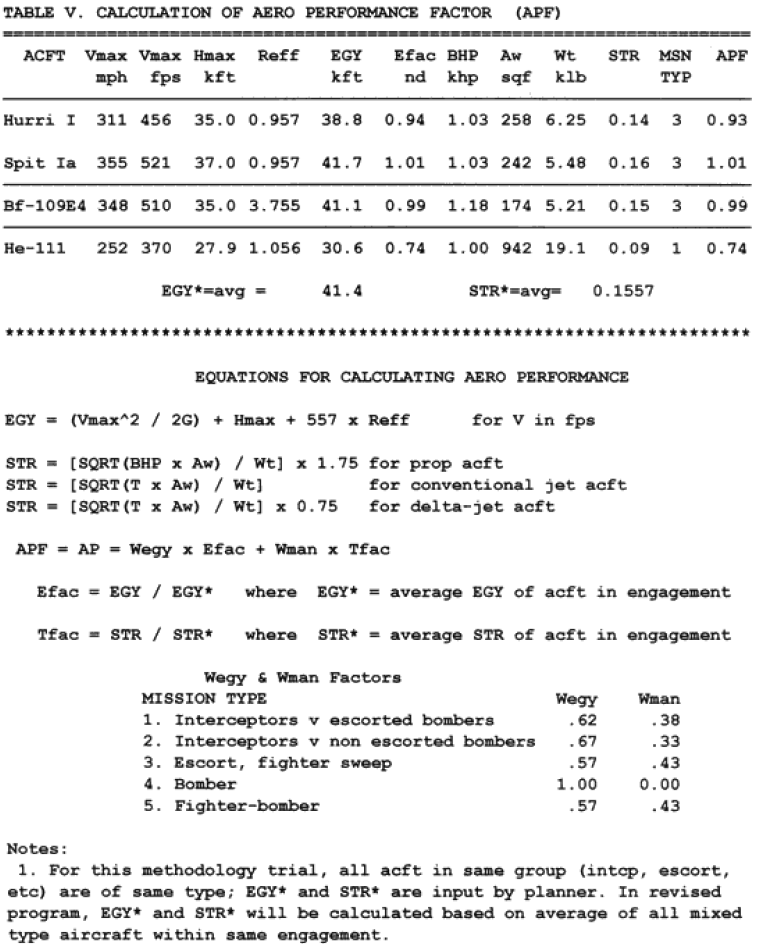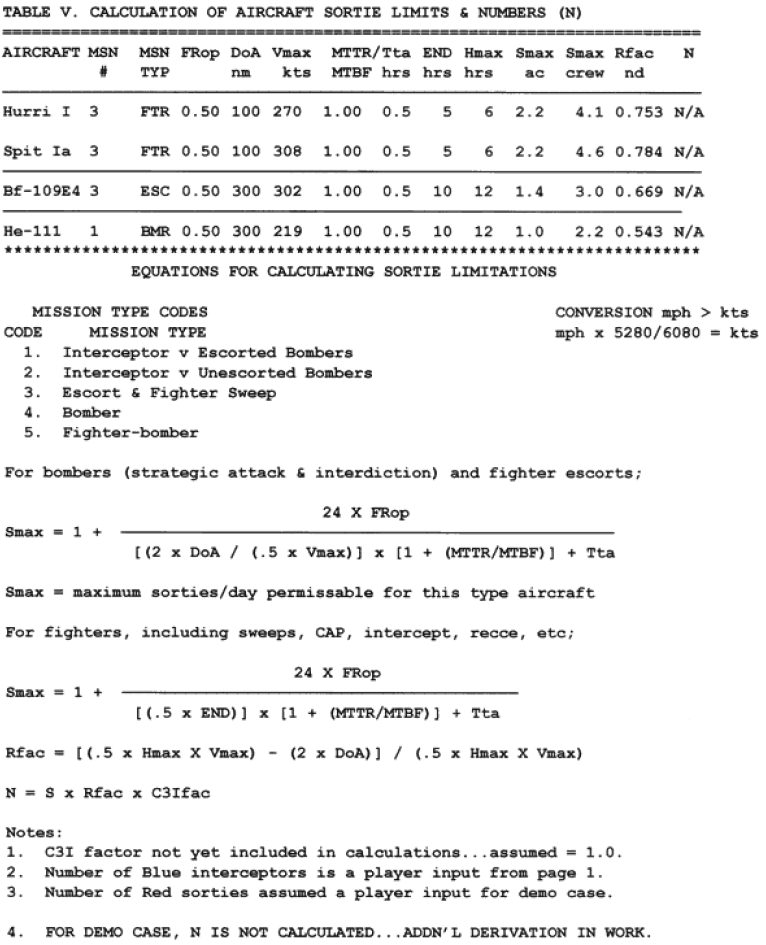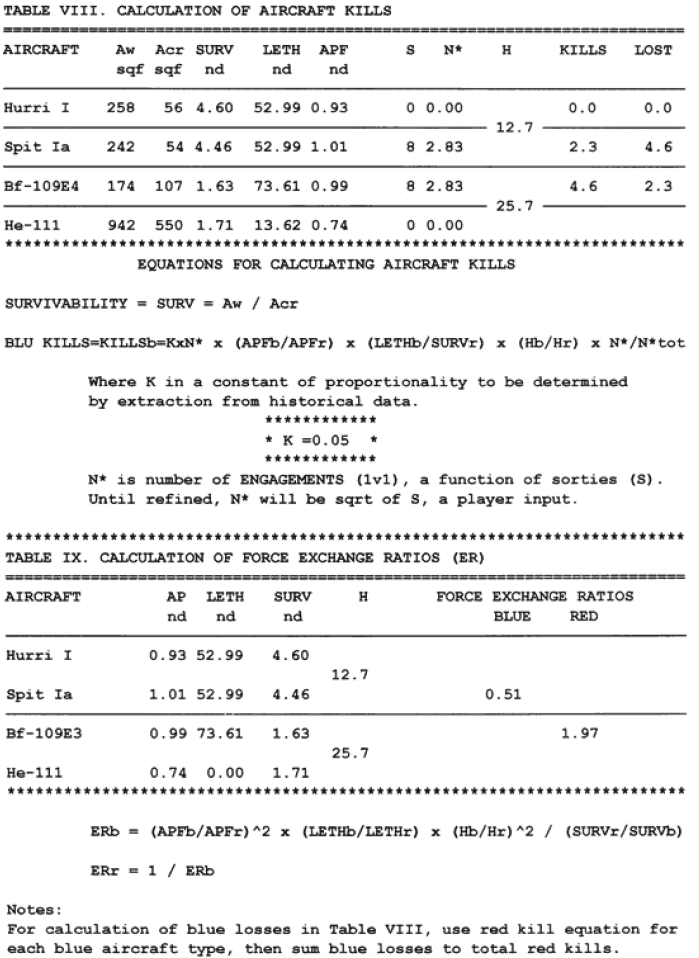[The article below is reprinted from the April 1997 edition of The International TNDM Newsletter. A description of the TDI Air Model Historical Data Study can be found here.]
The Dupuy Air Campaign Model
by Col. Joseph A. Bulger, Jr., USAF, Ret.
The Dupuy Institute, as part of the DACM [Dupuy Air Campaign Model], created a draft model in a spreadsheet format to show how such a model would calculate attrition. Below are the actual printouts of the “interim methodology demonstration,” which shows the types of inputs, outputs, and equations used for the DACM. The spreadsheet was created by Col. Bulger, while many of the formulae were the work of Robert Shaw.









I didn’t know Dupuy had modeled air warfare. I notice he did not neglect Human Factors either, looking at both aircrew and leadership quality.
This gives a good idea of his calculations; is there any more detail on his algorithms?
We never got the effort beyond the feasibility stage. The original contract was awarded at the insistence of a Lt. General. By the time we had completed the feasibility study (which is what is presented here) he had moved on to his next assignment, and no one with budget had any direct interest in this. We did brief it to a number of people inside the air force, including the head of Air Force OR (I was at that briefing); but in general, even though it was widely acknowledged that the current Air Force air campaign models were sorely lacking, there was no interest in further funding us to try to turn this into reality.
I recall looking at the DACM model from the newsletter a long time ago, but apparently there was more detail here than I remember. I’m keen to compare this to the modeling or air warfare that the victory games system does, and look for key differences. See the upcoming blog post.
This is really interesting to read! Have you read Quarry’s analysis of air armament effectiveness?
http://quarryhs.co.uk/WW2guneffect.htm
I’ve been stuck for years in creating a workable air combat model for a computer game modification (Open General) and found the greatest problem was variable or lacking data.
Very interesting, this looks solid.